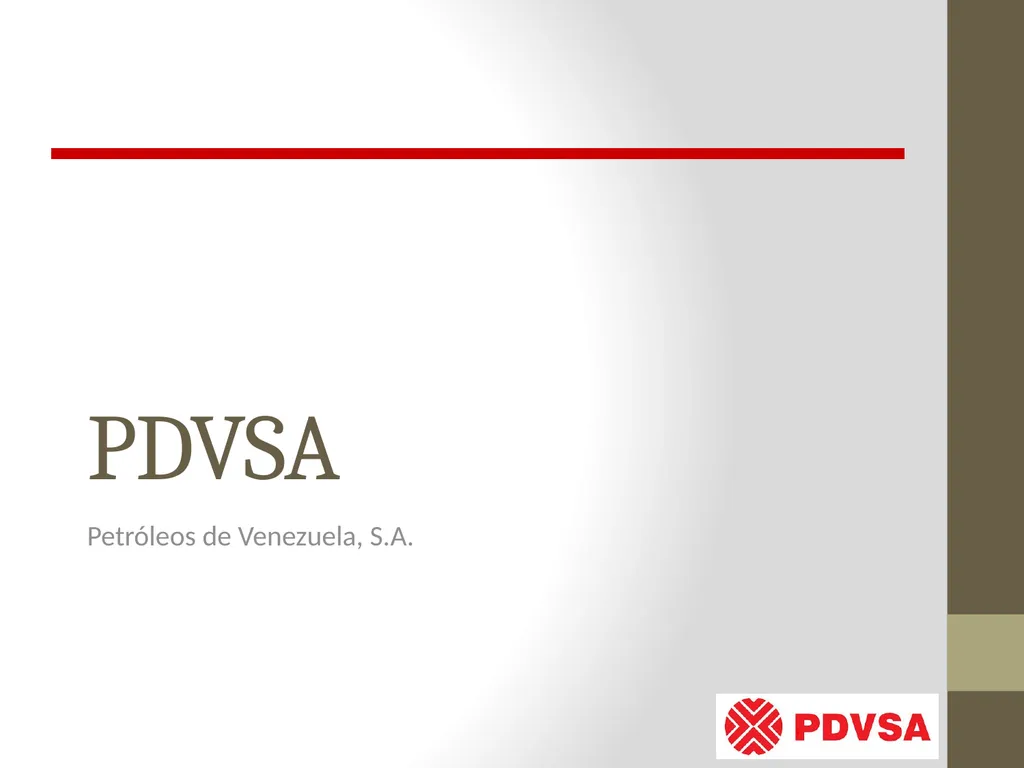PDVSA Petróleos de Venezuela, S.A. Introduction
Author : faustina-dinatale | Published Date : 2025-11-08
Description: PDVSA Petróleos de Venezuela SA Introduction 1976 early 2000s Most capable forwardthinking autonomous NOC 2002 2003 Launched a series of politically disastrous strikes against President Hugo Chavez 2003 Chavez purged PDVSA of
Presentation Embed Code
Download Presentation
Download
Presentation The PPT/PDF document
"PDVSA Petróleos de Venezuela, S.A. Introduction" is the property of its rightful owner.
Permission is granted to download and print the materials on this website for personal, non-commercial use only,
and to display it on your personal computer provided you do not modify the materials and that you retain all
copyright notices contained in the materials. By downloading content from our website, you accept the terms of
this agreement.
Transcript:PDVSA Petróleos de Venezuela, S.A. Introduction:
PDVSA Petróleos de Venezuela, S.A. Introduction 1976 – early 2000’s Most capable forward-thinking, autonomous NOC 2002 – 2003 Launched a series of politically disastrous strikes against President Hugo Chavez 2003 Chavez purged PDVSA of dissidents & converted co from commercially oriented to a less proficient firm with more attention to state objectives Introduction – Cont’d Currently PDVSA functions simultaneously as an operating company, developing agency, political tool, and government cash cow Maintains status as one of the world’s 50 largest companies and one of the largest NOCs Since the 1980’s, has held extensive international interest, including US gas chain CITGO Since 1990’s, Partner with IOCs in domestic upstream operations History of Venezuelan Oil Sector IOC’s turned Venezuela into an early and important oil producer Commercial development began in 1914 when Caribbean Petroleum started producing from the Mene Grand field Major discoveries followed in fields at Las Cruces (1916) and especially at La Rosa (1922) Control under General Juan Vicente Gomez Existing taxation framework allowed IOC’s, Paid low royalty rate (3%) Subsurface tax rates IOCs enjoyed tremendous success under these conditions By 1920’s, Venezuela became the world’s leading oil exporter and second-largest oil producer (behind the US) History of Venezuelan Oil Sector In 1935, after Vicente Gomez’s death, the government began pressing for changes in taxes and concession terms Landmark Laws in 1943 and 1948 Created 50-50 profit splits Government and IOCs reached 40 year concession agreement under this taxation framework Relations remained steady for the next 15 years From 1944 to 1958, oil production increased at annual rate of 19.5% capital stock grew by 14.3% annually Oil sector wealth spilled over to the broader Venezuelan economy By 1960, Venezuela became the wealthiest country in Latin America Nationalism Economics Venezuela’s Military civilian regime raised taxes in 1958, shattering the long-established 50/50 profit Government chose not to renew the 40 year concessions In 1958, new law and fee system for foreign workers By the time of nationalization, nearly all Venezuela’s oil sector employees were Venezuelan In 1960, OPEC was founded in Baghdad, Iraq. Five countries namely Islamic Republic of Iran, Iraq, Kuwait, Saudi Arabia and Venezuela. Nationalism In 1970, Congress passes law mandating reversion of oil sector concession government approval of IOC changes to operation prohibitions on movement of assets 1974 – Presidential Commission on Nationalization Commission brokered compromises among different groups Government agreed to compensate private companies for the value (paying













